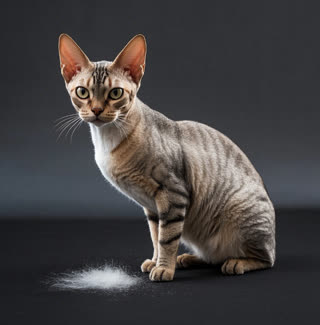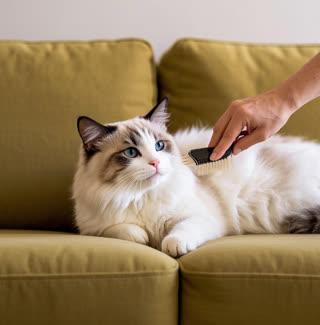The Devon Rex cat, known for its wavy coat, oversized ears, and playful personality, is a unique breed that requires specialized grooming care—especially for those with oily skin. A common question among owners is how often to bathe a Devon Rex with oily skin. Over-bathing can strip natural oils, while under-bathing may lead to greasy fur and skin irritation. In this comprehensive guide, we’ll explore bathing frequency, product recommendations, and maintenance routines tailored to this breed’s needs, ensuring your feline stays clean and healthy without compromising their skin’s balance.
1. Understanding the Devon Rex’s Skin and Coat
The Devon Rex has a fine, curly coat that produces less dander than other breeds, but their skin tends to secrete more oils due to fewer guard hairs. This oiliness can accumulate quickly, leading to a greasy feel and potential odor. While their unique coat is hypoallergenic, oily skin requires careful management to prevent clogged pores or dermatitis.
Key Takeaway: Regular grooming is essential, but bathing frequency must strike a balance to avoid over-drying or exacerbating oil production.
2. How Often to Bathe a Devon Rex with Oily Skin
The ideal bathing frequency for a Devon Rex with oily skin is every 4–6 weeks, adjusted based on individual needs. Factors influencing this include:
Skin Sensitivity: Some cats may develop irritation with frequent baths.
Activity Level: Outdoor or highly active cats may need more frequent cleaning.
Seasonal Changes: Humidity and temperature can affect oil production.
Over-bathing (e.g., weekly) can strip essential oils, triggering the skin to overcompensate by producing more grease—similar to human skincare principles. Conversely, waiting longer than 8 weeks may lead to buildup and discomfort.
3. Step-by-Step Bathing Process
a. Pre-Bath Preparation
Brush gently with a soft-bristle brush to remove loose fur and debris.
Trim nails to avoid scratches during the bath.
b. Choosing the Right Products
Use a hypoallergenic, pH-balanced shampoo formulated for cats with oily or sensitive skin. Avoid human shampoos or harsh detergents, which can disrupt skin health. Look for labels like “oil-free” or “non-comedogenic” to prevent pore clogging.
c. Bathing Technique
Use lukewarm water to wet the coat thoroughly.
Apply shampoo in gentle circular motions, focusing on oily areas (e.g., back, tail base).
Rinse completely to avoid residue, which can irritate the skin.
Dry with a microfiber towel or low-heat blow dryer to prevent chilling.
4. Complementary Care for Oily Skin
Bathing alone isn’t enough. Incorporate these practices:
Weekly Wipes: Use pet-safe grooming wipes between baths to reduce grease.
Diet Adjustments: High-quality food with omega-3 fatty acids supports skin health.
Environmental Cleanliness: Wash bedding weekly to minimize oil transfer.
5. Common Mistakes to Avoid
Using Harsh Products: Alcohol-based or fragranced shampoos can worsen oiliness.
Skipping Rinsing: Residual shampoo may cause itching or dryness.
Ignoring Post-Bath Care: Moisturize with vet-approved sprays if the skin feels dry.
6. When to Consult a Veterinarian
If your Devon Rex exhibits redness, excessive scratching, or odor despite regular care, consult a vet. These could indicate underlying issues like fungal infections or hormonal imbalances requiring medical treatment.
Determining how often to bathe a Devon Rex with oily skin hinges on observing your cat’s unique needs and adapting routines accordingly. By combining gentle bathing practices, targeted products, and holistic care, you’ll maintain their signature silky coat while promoting long-term skin health. For Devon Rex owners, patience and consistency are key to mastering this delicate balance!










